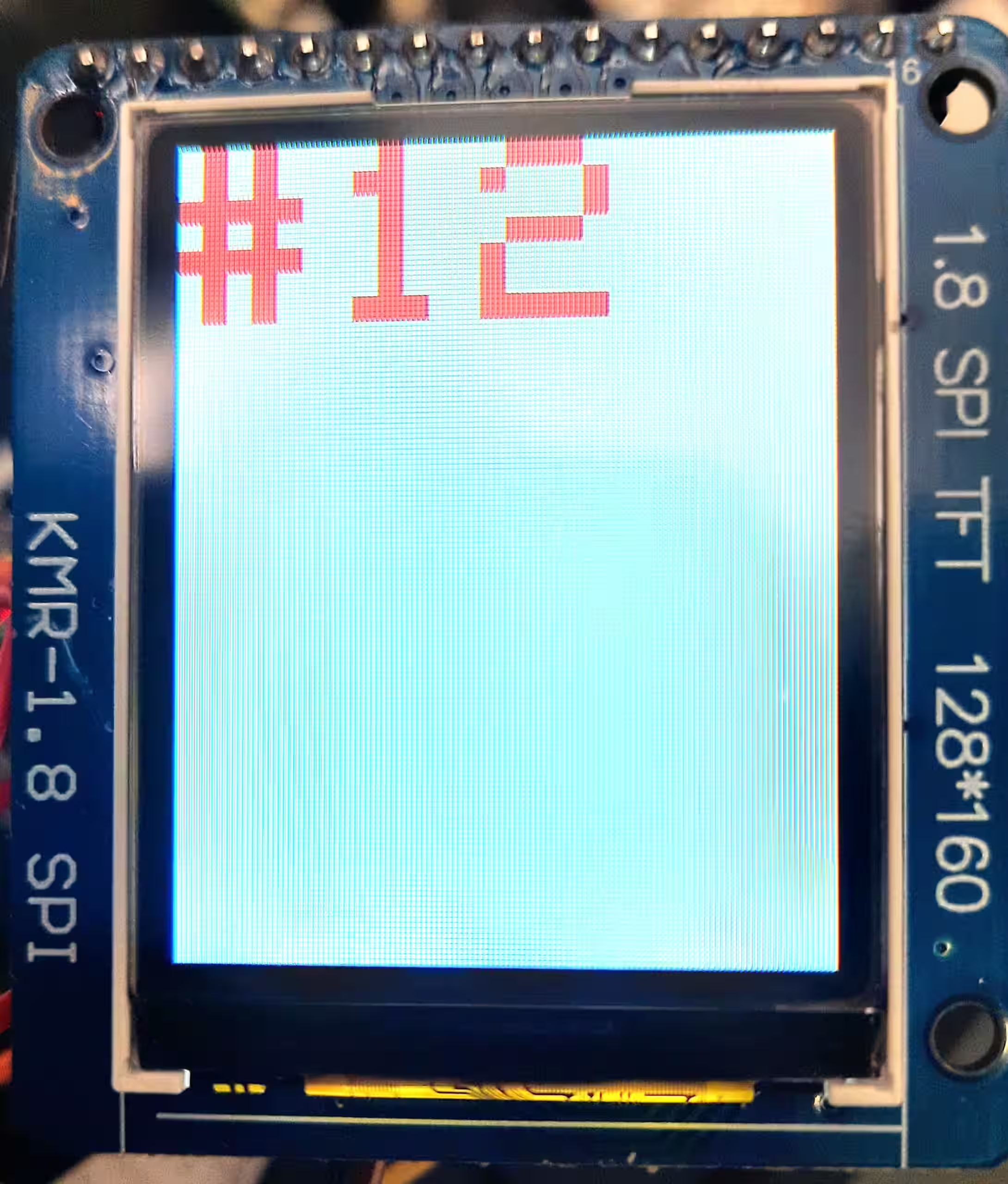Adafruit ST7735R TFT display minimal text example for PlatformIO
This example builds on the hardware & software setup outlined in Minimal ESP32 PlatformIO TFT display example using Adafruit ST7735. See there for the PlatformIO example & hardware setup.
Our code displays a counter on the display that is updated every second. Only the rectangle from the last text draw is cleared, facilitating much faster screen updates than if clearing the entire screen. Also, this technique allows you to flexibly update only part of the screen instead of having to re-draw all other segments on update.

st7735_counter_example.cpp
#include <string>
#include <Arduino.h>
#include <Adafruit_GFX.h>
#include <Adafruit_ST7735.h>
#include <string>
constexpr int Pin_LCD_CS = 27;
constexpr int Pin_LCD_DC = 23;
constexpr int Pin_LCD_RST = 22;
constexpr int Pin_LCD_SCLK = 14;
constexpr int Pin_LCD_MISO = 12;
constexpr int Pin_LCD_MOSI = 13;
Adafruit_ST7735 lcd(Pin_LCD_CS, Pin_LCD_DC, Pin_LCD_MOSI, Pin_LCD_SCLK,
Pin_LCD_RST);
uint16_t backgroundColor = ST7735_WHITE;
uint16_t textColor = ST7735_RED;
void setup() {
lcd.initR(INITR_BLACKTAB); // Init ST7735S chip, black tab
lcd.enableDisplay(true); // Enable display
// Fill screen with background color
lcd.fillScreen(backgroundColor);
}
uint32_t counter = 0;
/**
* The rectangle to clear the previous text
* This is computed
*
* @return int
*/
struct Rect {
int16_t x1;
int16_t y1;
uint16_t w;
uint16_t h;
};
Rect lastTextRect;
void loop() {
// The text we'll draw
std::string text = "#" + std::to_string(counter);
// Clear previous text
if(!lastTextRect.w == 0 || !lastTextRect.h == 0) {
lcd.fillRect(
lastTextRect.x1,
lastTextRect.y1,
lastTextRect.w,
lastTextRect.h,
backgroundColor
);
}
// Set position & parameters
lcd.setCursor(0, 0);
lcd.setTextColor(textColor);
lcd.setTextWrap(true);
lcd.setTextSize(5);
// Compute bounding box of text text we'll draw
// (so we can clear it later)
lcd.getTextBounds(
text.c_str(),
lcd.getCursorX(),
lcd.getCursorY(),
&lastTextRect.x1,
&lastTextRect.y1,
&lastTextRect.w,
&lastTextRect.h
);
lcd.print(text.c_str());
delay(1000);
counter++;
}platformio.ini
[env:esp32dev]
platform = espressif32
board = esp32dev
framework = arduino
lib_deps =
adafruit/Adafruit GFX Library@^1.11.5
adafruit/Adafruit ST7735 and ST7789 Library@^1.10.0Check out similar posts by category:
Arduino, PlatformIO
If this post helped you, please consider buying me a coffee or donating via PayPal to support research & publishing of new posts on TechOverflow